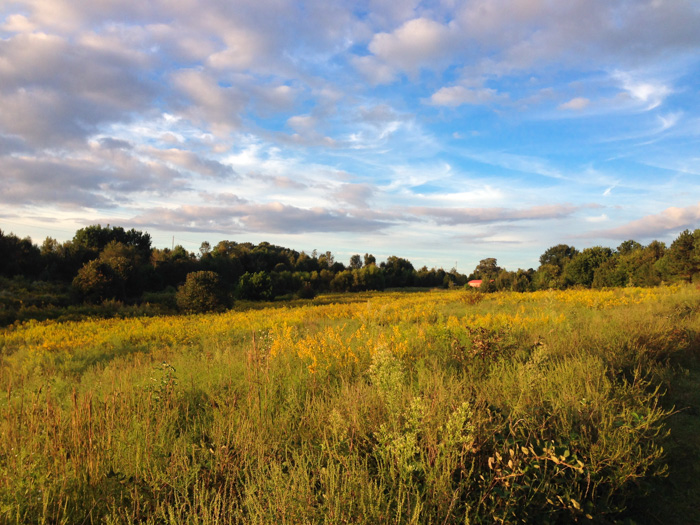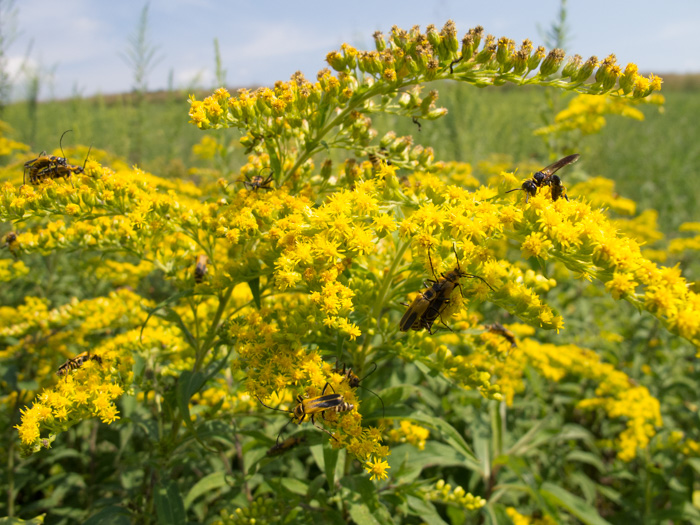The Goldenrods of Prairie Ridge
For immediate release ‐ October 07, 2021
Contact: Micah Beasley, 919.707.9970. Images available upon request

By Chris Goforth, Head of Citizen Science
Most of the flowers at Prairie Ridge have already bloomed and wilted this year, but as summer has shifted to fall, visitors to Prairie Ridge will see one last flush of blooms before winter sets in. The goldenrods are currently putting on a magnificent display of bright yellow flowers that turn the whole prairie into a sea of golden blooms!
The goldenrods belong to the aster family of plants, Asteraceae, and the genus Solidago. There are over 100 species in the genus and representatives are found throughout the United States and Mexico as well as parts of Canada.
In North Carolina, we have multiple species that can be difficult to tell apart without a trained eye. However, most goldenrods share certain characteristics, such as forming clusters of bright golden-yellow flowers that bloom in the late summer or fall at the tips of long stalks.
Most species have long and narrow leaves, though some species have toothed leaf edges and some have smooth. Many species also produce large amounts of nectar when the weather is moist.
Goldenrods are important plants for wildlife. As a fall blooming plant that produces abundant nectar, they attract a huge variety of insects and other pollinators late in the season when few other nectar sources are available.

Butterflies, wasps, moths, bees, flies, beetles and other insects visit the plants to sip nectar. The plants also attract a wide variety of predatory insects and other arthropods, such as mantids and spiders, that take advantage of the abundance of insects coming in to feed at the flowers. Some birds and mammals are also known to take advantage of the plants.
Because they attract such a variety of wildlife, goldenrods are popular plants for native plant gardens or wildlife/butterfly gardens. They are also popular due to their bright, late season blooms, their resistance to deer, their tolerance to drought and their low maintenance needs.
Did you know there is a misconception that goldenrod is highly allergenic and causes fall allergies? In fact, the pollen grains of goldenrod are too large and heavy to blow in the wind and are mostly moved around by pollinator insects. This means that the pollen is rarely inhaled by humans. Ragweeds and other asters, however, often bloom just before goldenrod and some (such as the Common Ragweed) have a superficially similar appearance, leading many people to mistake these plants for goldenrod. Ragweed is a wind-pollinated plant. Its pollen is readily inhaled and causes huge problems for many pollen allergy sufferers, making it a typical source of fall pollen allergies.
The goldenrod at Prairie Ridge is putting on a spectacular show this year! For the best view, head down to the pond during your next visit and look off to the right of the water. There you will see an entire field ablaze in gold! Make plans to visit the Museum’s Prairie Ridge location.
For more information about our upcoming activities, conservation news and ground-breaking research, follow @NaturalSciences on Instagram, Twitter and Facebook. Join the conversation with #visitNCMNS.

